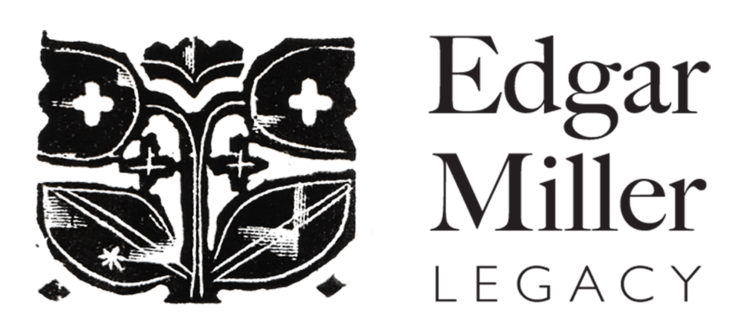Cover design for No-Jury Artists' Cubist Ball - Edgar Miller - 1923 - Edgar Miller Legacy Archive - © Alexander Vertikoff
Cover design for No-Jury Artist’s Cubist Ball
Edgar Miller
1923
Block print on board
L 36, W 28 cm
The poster Miller created for the first of the Cubist Balls by the No-Jury Society of Artists indicates that the affair was going to be a riveting party. From Lauren Drapala’s essay on the Streets of Paris and the emergent bohemian art culture of Chicago’s Interwar Era:
Miller's poster design for the 1923 Cubist Ball documents both his technical proficiency as well as his early employment of sensationalism to promote the modernist art cause. The poster centers on an abstracted scene of four jazz performers, disjointed and re-assembled together by their instruments. The diagonally aligned composition is further disrupted by jagged and spiked outlines around each figure, representing the musical reverberations emitting from their instruments. The black ink on orange paper backing reinforces a sharp contrast in the composition of the print, and the figures' stereotyped blackness is further accentuated through an over exaggeration of the eyes and massive lips, typical of blackface performers.
It’s important to note that the depictions of the jazz performers in this piece are widely understood today as a portrayal of a racist trope rooted in white supremacy and denigration of black individuals that had been pervasive throughout art in the United States, especially in graphic design, until the mid-to-late 20th century. It is important to take note of these problematic depictions in some of Miller’s work, though they are few. We continue to exhibit images by Edgar Miller today, as they remain an essential, though painful, reminder that such derogatory imagery has long been part of American art, graphic design, advertising, and commerce. The values that these images tacitly or consciously espoused are not shared in any way today by Edgar Miller Legacy or researchers that the organization works with.
The No-Jury Society of Artists
By 1923, Edgar Miller was already one of the most up-and-coming artists in Chicago’s burgeoning art scene. The 1920s were a time of social, political, and cultural upheaval, and for a young artist from Idaho just getting started in the big city, it was surely an exciting time to be alive and productive. Miller was involved with all kinds of groups, informal and formal, with goals of improving the art culture in Chicago, challenging what they saw as the conservatism of the old guard. While we know Miller loved the classics and embraced a pre-modern view of artisanship, he also was very much interested in the social changes that were unfolding in the new century.
One such outcrop of this independent mindedness was a group called the No-Jury Artists, with a self-explanatory mission to elevate artists through exhibitions without juries, which were seen as filled with overly revanchist contrarians who did not understand what Picasso and Matisse were doing, let alone Mondrian and Duchamp. From The Art Institute of Chicago:
The main opportunity for living artists to exhibit their work in the city, the Art Institute's annual Chicago and Vicinity show, was juried by the conservative Chicago Society of Artists. In 1921, after a particularly harsh year, however, artists Carl Hoeckner, Raymond Jonson, and Rudolph Weisenborn organized a "salon des refusés" of nearly 300 works at Rothchild's department store on State Street. The following year, they formed the Chicago No-Jury Society of Artists and began to hold independent shows at such venues as Marshall Field's department store. With an abstract emblem and events like the Cubist Balls of 1923–25, these artists clearly looked to the Armory Show as a source of inspiration.

